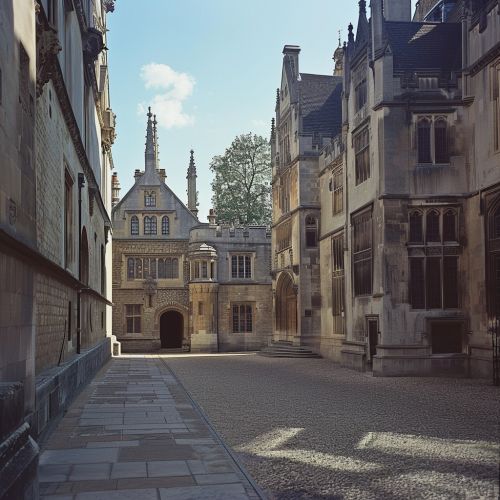Gonville and Caius College, Cambridge
History
Gonville and Caius College, often referred to simply as Caius (pronounced "keys"), is one of the oldest and largest colleges of the University of Cambridge. The college was first established in 1348 by Edmund Gonville, rector of Terrington St Clement in Norfolk, and was originally named Gonville Hall. Gonville's aim was to found a college to educate scholars, with a particular focus on the disciplines of theology, canon law, and philosophy.


In 1557, the college was refounded by John Caius, a physician who had studied at Gonville Hall and later became a fellow of the college. Caius made significant contributions to the college, including the construction of three gates - the Gate of Humility, the Gate of Virtue, and the Gate of Honour - which still stand today. These gates symbolize the journey of academic progression, from undergraduate studies through to graduation.
Buildings and Grounds
The college is located in the heart of Cambridge, with its main site situated on Trinity Street. The college's buildings and grounds are notable for their historic and architectural significance. The Old Courts, which were built in the 14th century, are some of the oldest buildings in Cambridge. The college also includes the Tree Court, which is home to a large plane tree believed to be over 200 years old.
The college's library, known as the Cockerell Building, is an important resource for students. The library houses a significant collection of books and manuscripts, including many rare and historic texts. The Cockerell Building also hosts exhibitions and events, providing a cultural hub for the college community.
The college chapel, designed by architect George Gilbert Scott, is a significant example of Gothic Revival architecture. The chapel hosts regular services, as well as concerts and other events, and is an important part of college life.
Academics
Gonville and Caius College offers a wide range of undergraduate and postgraduate courses, covering a broad spectrum of academic disciplines. The college has a strong reputation for academic excellence, and its students regularly achieve high results in the university's examinations.
The college's teaching staff includes many distinguished academics, who are leaders in their respective fields. The college also hosts visiting scholars and researchers, further enhancing its academic community.
The college provides a supportive learning environment, with a range of resources and facilities available to students. This includes study spaces, computer facilities, and a well-stocked library.
Student Life
Student life at Gonville and Caius College is vibrant and diverse, with a wide range of clubs, societies, and events. The college's student union, known as the JCR (Junior Combination Room), represents the interests of undergraduate students and organizes social events throughout the year.
The college also has a strong tradition of music, with its own choir and music society. The college's sports teams compete in a variety of sports, including rowing, rugby, and cricket.
Notable Alumni
Gonville and Caius College has a long list of notable alumni, who have made significant contributions in a range of fields. This includes several Nobel laureates, such as physicist Ernest Rutherford and economist James Meade. Other notable alumni include the physician and polymath Thomas Browne, and the mathematician G.H. Hardy.
